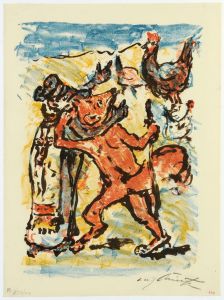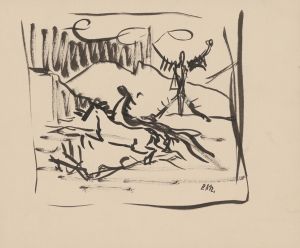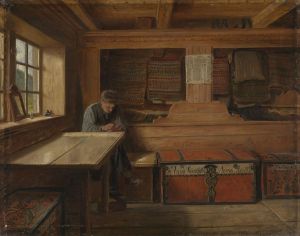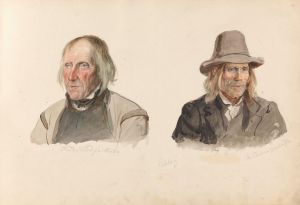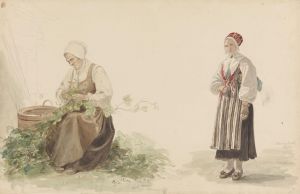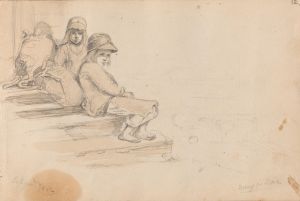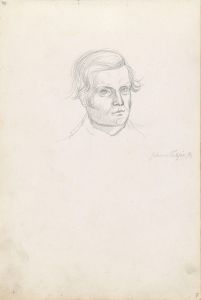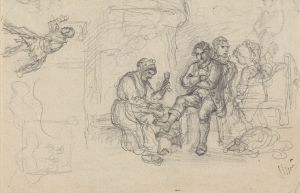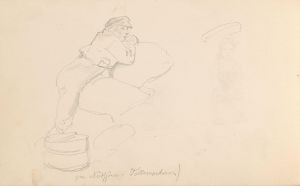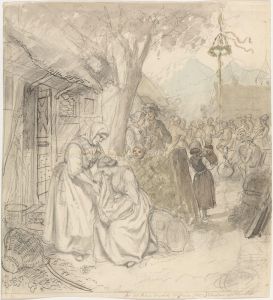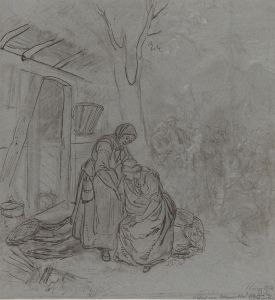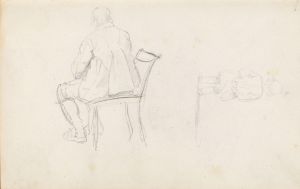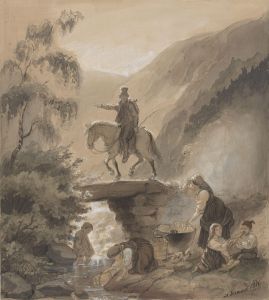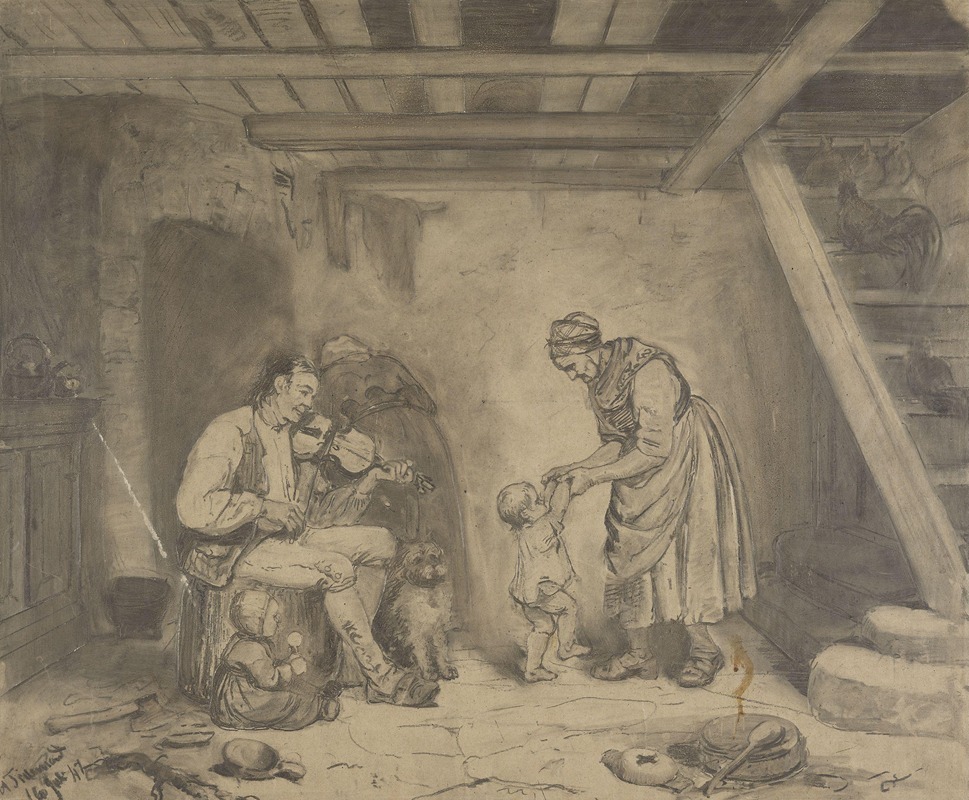
Kone danser med barn til felemusikk
A hand-painted replica of Adolph Tidemand’s masterpiece Kone danser med barn til felemusikk, meticulously crafted by professional artists to capture the true essence of the original. Each piece is created with museum-quality canvas and rare mineral pigments, carefully painted by experienced artists with delicate brushstrokes and rich, layered colors to perfectly recreate the texture of the original artwork. Unlike machine-printed reproductions, this hand-painted version brings the painting to life, infused with the artist’s emotions and skill in every stroke. Whether for personal collection or home decoration, it instantly elevates the artistic atmosphere of any space.
Adolph Tidemand was a prominent Norwegian painter in the 19th century, best known for his depictions of Norwegian folk life and traditions. One of his works, "Kone danser med barn til felemusikk" (translated as "Woman Dancing with a Child to Fiddle Music"), reflects his dedication to capturing the cultural essence of rural Norway during his time.
The painting portrays a lively and intimate scene of a woman dancing with a child, accompanied by the music of a fiddler. This subject matter aligns with Tidemand's broader artistic focus on everyday life and the customs of Norwegian peasants, which he sought to document and celebrate in his art. The inclusion of the fiddle, a traditional instrument in Norwegian folk music, underscores the cultural significance of music and dance in rural communities.
Adolph Tidemand was born on August 14, 1814, in Mandal, Norway, and studied art in Copenhagen, Düsseldorf, and other European cities. He became one of the leading figures of the Düsseldorf School of painting, which emphasized detailed, realistic depictions of subjects. Tidemand's works often combined his academic training with a deep interest in Norwegian national identity, which was a growing concern during the 19th century as Norway sought to assert its cultural independence.
While "Kone danser med barn til felemusikk" is not as widely known as some of Tidemand's other works, such as "Haugianerne" or "Brudeferden i Hardanger" (the latter painted in collaboration with Hans Gude), it is representative of his ability to convey warmth and vitality in scenes of rural life. His paintings often served as visual narratives that preserved the traditions and lifestyles of Norwegian communities, many of which were undergoing significant changes due to modernization and urbanization during his lifetime.
The exact date of creation for "Kone danser med barn til felemusikk" is not well-documented, but it is consistent with Tidemand's broader body of work, which spanned the mid-19th century. The painting is characterized by its attention to detail, use of warm and earthy tones, and a composition that draws the viewer into the joyous moment shared by the figures.
Adolph Tidemand's contributions to Norwegian art and culture remain significant. His works are celebrated for their historical and ethnographic value, as well as their artistic merit. Today, many of his paintings, including "Kone danser med barn til felemusikk," are housed in museums and collections, where they continue to be appreciated for their role in documenting and preserving Norway's cultural heritage.





